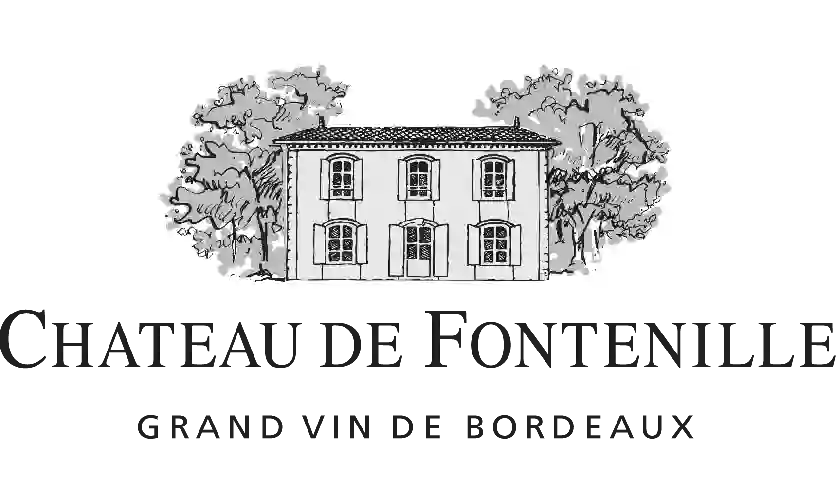The Château de Fontenille of Bordeaux

The Château de Fontenille is one of the best wineries to follow in Bordeaux.. It offers 14 wines for sale in of Bordeaux to come and discover on site or to buy online.
Looking for the best Château de Fontenille wines in Bordeaux among all the wines in the region? Check out our tops of the best red, white or effervescent Château de Fontenille wines. Also find some food and wine pairings that may be suitable with the wines from this area. Learn more about the region and the Château de Fontenille wines with technical and enological descriptions.
How Château de Fontenille wines pair with each other generally quite well with dishes of pork, vegetarian or poultry such as recipes of delicious marinated pork chops, goat cheese and bacon quiche or quiche with mixed vegetables.
On the nose the white wine of Château de Fontenille. often reveals types of flavors of pineapple, cream or grapefruit and sometimes also flavors of oaky, tropical or citrus. In the mouth the white wine of Château de Fontenille. is a powerful.
Bordeaux, in southwestern France, is one of the most famous, prestigious and prolific wine regions in the world. The majority of Bordeaux wines (nearly 90% of the production Volume) are the Dry, medium and Full-bodied red Bordeaux blends for which it is famous. The finest (and most expensive) are the wines of the great châteaux of Haut-Médoc and the right bank appellations of Saint-Émilion and Pomerol. The former focuses (at the highest level) on Cabernet Sauvignon, the latter on Merlot.
The legendary reds are complemented by high-quality white wines made from Semillon and Sauvignon Blanc. These range from dry whites that challenge the best of Burgundy (Pessac-Léognan is particularly renowned) to the Sweet, botrytised nectars of Sauternes. Although Bordeaux is most famous for its wines produced in specific districts or communes, many of its wines fall under other, broader appellations. These include AOC Bordeaux, Bordeaux Supérieur and Crémant de Bordeaux.
The Bordeaux Red appellation represents more than a third of the total production. The official Bordeaux wine region extends 130 kilometres inland from the Atlantic coast. 111,000 hectares of vineyards were registered in 2018, a figure that has remained largely constant over the previous decade. However, the number of winegrowers has consolidated; in 2018 there were around 6,000, compared to 9,000 a decade earlier.
How Château de Fontenille wines pair with each other generally quite well with dishes of beef, pork or game (deer, venison) such as recipes of beef fashion, alsatian sauerkraut or duck fillets with honey.
On the nose the pink wine of Château de Fontenille. often reveals types of flavors of raspberry, red fruit or citrus fruit.
Malbec, a high-yielding red grape variety, produces tannic and colourful wines. It is produced in different wine-growing regions and changes its name according to the grape variety. Called Auxerrois in Cahors, Malbec in Bordeaux, it is also known as Côt. 6,000 hectares of the Malbec grape are grown in France (in decline since the 1950s). Malbec is also very successful in Argentina. The country has become the world's leading producer of Malbec and offers wines with great potential.
How Château de Fontenille wines pair with each other generally quite well with dishes of beef, veal or game (deer, venison) such as recipes of cicadas at the chib, veal simmered with vegetables or saddle of hare jura style.
On the nose the red wine of Château de Fontenille. often reveals types of flavors of cherry, oaky or citrus and sometimes also flavors of smoke, apples or peach. In the mouth the red wine of Château de Fontenille. is a powerful with a nice balance between acidity and tannins.
Bottle with a capacity of 1.5 litres.
How Château de Fontenille wines pair with each other generally quite well with dishes of shellfish, poultry or appetizers and snacks such as recipes of risotto of the sea, roast goose, soft or lupine seeds for kemia (the aperitif).
Merlot noir is a grape variety that originated in France (Bordeaux). It produces a variety of grape specially used for wine making. It is rare to find this grape to eat on our tables. This variety of grape is characterized by small to medium sized bunches, and medium sized grapes. Merlot noir can be found in many vineyards: South West, Languedoc & Roussillon, Cognac, Bordeaux, Loire Valley, Armagnac, Burgundy, Jura, Champagne, Rhone Valley, Beaujolais, Provence & Corsica, Savoie & Bugey.
Planning a wine route in the of Bordeaux? Here are the wineries to visit and the winemakers to meet during your trip in search of wines similar to Château de Fontenille.
Cabernet Franc is one of the oldest red grape varieties in Bordeaux. The Libourne region is its terroir where it develops best. The terroirs of Saint-Emilion and Fronsac allow it to mature and develop its best range of aromas. It is also the majority in many blends. The very famous Château Cheval Blanc, for example, uses 60% Cabernet Franc. The wines produced with Cabernet Franc are medium in colour with fine tannins and subtle aromas of small red fruits and spices. When blended with Merlot and Cabernet Sauvignon, it brings complexity and a bouquet of aromas to the wine. It produces fruity wines that can be drunk quite quickly, but whose great vintages can be kept for a long time. It is an earlier grape variety than Cabernet Sauvignon, which means that it is planted as far north as the Loire Valley. In Anjou, it is also used to make sweet rosé wines. Cabernet Franc is now used in some twenty countries in Europe and throughout the world.